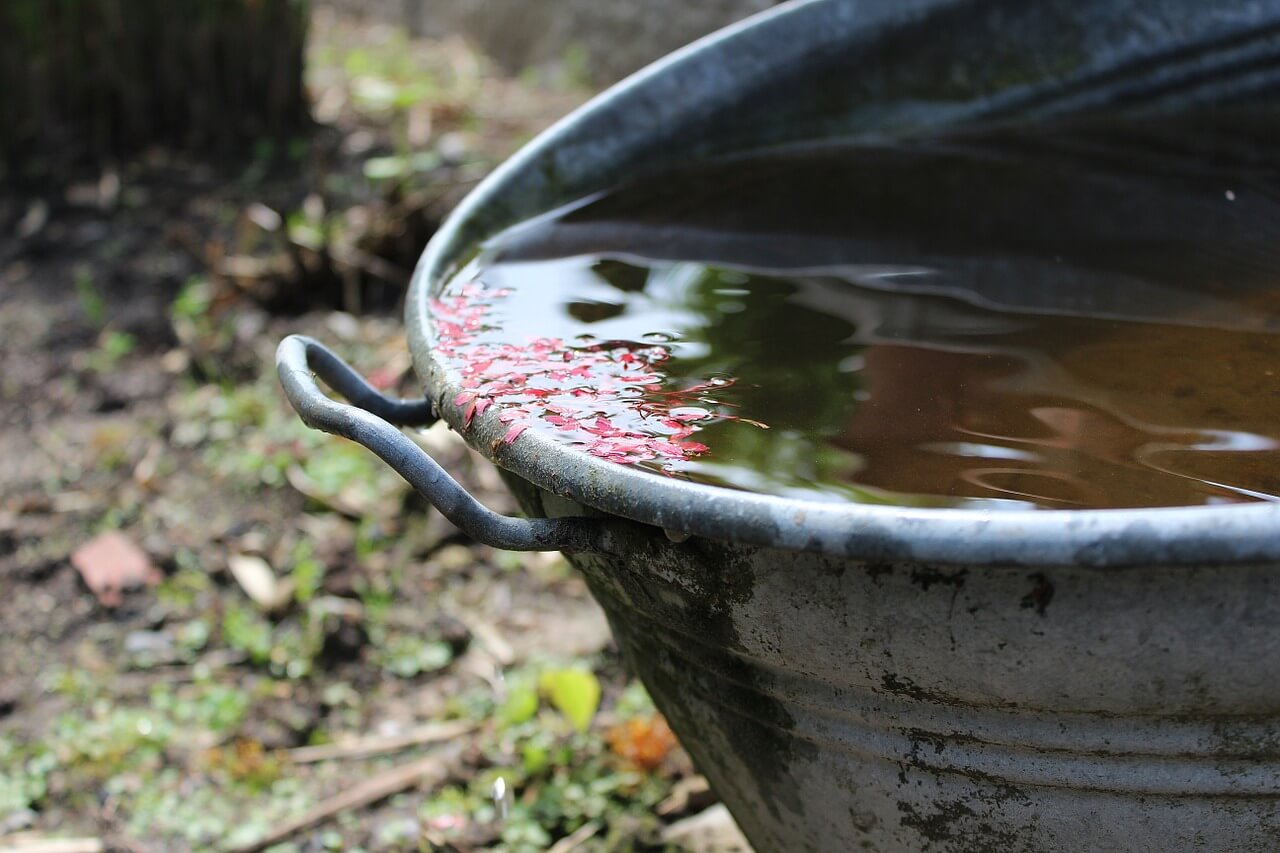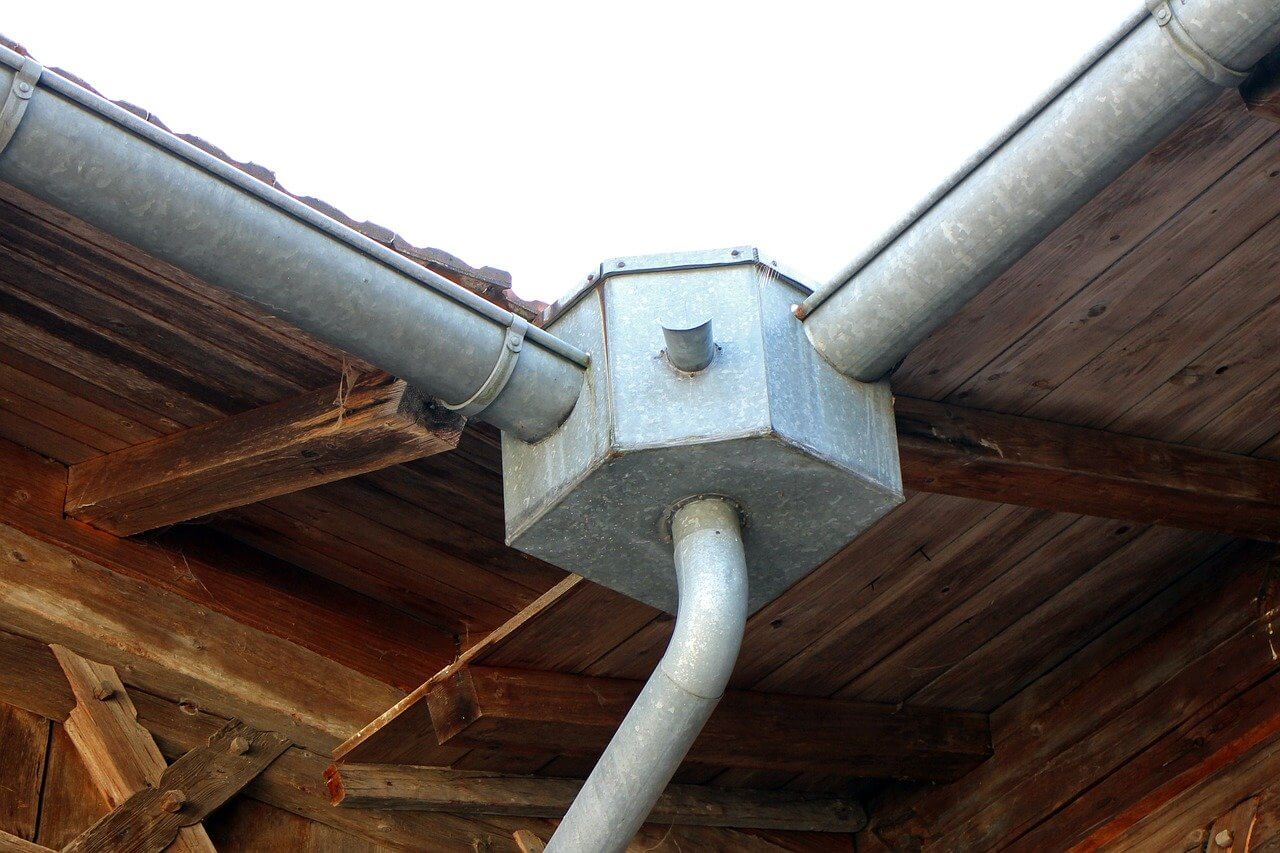If you’re wondering how to collect rainwater for plants, you’re in the right place! Rainwater collection is a wonderful way to save money on your water bill while also increasing your conservation efforts. It’s surprisingly easy to do, too – in this article, we’ll walk you through everything you need to know.
What You'll Learn Today
Should I Collect Rainwater For My Plants?

During the summer months, in particular, so much of our good, potable water is used outside. We use it to wash our cars, irrigate our lawns, and of course, to water our plants.
If you’re paying for town or city water, this can get expensive in a hurry. As you likely already know, irrigating a garden can really jack up your water bill!
Not only that, but municipal water supplies are often treated with chemicals to make the water safe to drink. That’s good news for you – but not such great news for your plants, which can be sensitive to these treatments.
If you’re able to collect rainwater for your garden, you’ll not only save water, enhancing your conversation efforts, but you’ll likely save money. Not only that, but it can help prevent chemical salts and other harmful minerals from treated water from leaching into your soil.
What is the Best Way to Collect Rainwater?

There are several ways you can go about collecting rainwater for the garden. Here are some of the best tips.
Rain Barrels
Without a doubt, the easiest way to collect rainwater for the garden is to use a rain barrel. Using a rain barrel won’t require you to install or purchase any special plumbing. You can buy your own rain barrel with a plastic barrel that’s painted to match your landscape or home.
It’s easy to install. At the most basic, you’ll need five components. You will need a catchment surface, or something the water will run off into your barrel. For most gardeners, that will be your home or a similar structure, like a greenhouse.
You will also need a method of directing the flow. You can use gutters and downspouts for this, but if you don’t have these installed on your home or the other building you are planning to use, you can easily use a piece of pipe or something similar.
Ideally, you should also install a fine screened basket filter. This will be used to prevent insects and debris from getting into your water supply. If you’re just using the water to irrigate your plants, this item is more or less optional.
Your barrel should have a removable lid along with a spigot that you can install lower on the barrel to get the rainwater to your garden.
Need more information? This video has some information on how you can build your own inexpensive rain barrel at home.
Direct It Into a Soaker Hose or Other Irrigation System
After collecting water in a rain barrel, you can then divert it into a soaker hose or other type of irrigation system. This is an alternative to pulling water out of your barrels directly with a hose or watering can.
In this system, you’ll be able to direct water into your automatic watering system, making for a more efficient, hands-off kind of system.
Harvesting Rainwater for Aquaponics or Hydroponics
You can also collect rainwater from your roof and divert it directly into an aquaponics or hydroponics system.
Hydroponics involves growing plants with their roots in water instead of soil, while aquaponics allows you to grow plants in a hydroponic system that is then fertilized by fish (allowing you to get two different harvestable products – both vegetables and fish).
Simply divert the tubing or gutters from your rain barrel directly into the catchment basin for your hydroponics or aquaponics system. It’s as simple as that.
Collecting Rainwater in the Soil
This is a pretty rudimentary method of collecting rainwater for plants, but trust us – it works.
It involves using what Mother Nature has already given us – the soil! – to gather and direct rainwater to wherever you need it to go.
Earth mounds are pretty simple. They just involve taking advantage of naturally occurring microclimates, or areas that are naturally higher than lower than the ones around them. You can figure out where the wetter microclimates in your lawn are simply by watering heavily with your garden hose and watching where the water runs.
Once you have an idea of where the water likes to linger, you can dig trenches to divert water to the desired location. Use the soil you’ve removed from the trenches to build shallow walls on either side of the trench. In doing this, you’ll be creating miniature streams that flow toward your plants that require the most water, such as lettuce beds, rows of corn, and legumes.
Even simpler than that is to just use mulch. Mulch helps to collect and hold moisture in the soil along with regulating the temperature and suppressing weeds.
You can use any kind of mulch you want, including grass clippings, bark, or wood chips. Whatever you choose, apply it in a two- or three-inch layer around your plants for maximum water retention capabilities.
Storing Rainwater
Collecting rainwater is only the first part of the puzzle. You also need to know how to store it.
To decide how you can store rainwater in your garden, you need to have a basic understanding of the water cycle. You also need to clearly understand how water flows through your specific site.
Storing rainwater in your rain barrel, storage tank, or other container is an option. However, keep in mind that if you plan on just keeping the rainwater in the initial container in which you collected it, after a period of time, you may have an overflow issue.
You may also have issues with algae and debris in your rainwater if you don’t add some sort of cover to the barrel, so keep this in mind.
Otherwise, stored rainwater doesn’t need to be treated in any way. There is the potential for rainwater that’s come off your roof to be contaminated with bird and other animal feces, but if you’re just watering your plants, this should not be a problem.
It’s true that rainwater can harbor bacteria like E.coli, but these bacteria are naturally found in the soil so it’s no different than if you weren’t using rainwater to irrigate your plants.
In What US States is it Illegal to Collect Rainwater?

Research the rainwater harvesting laws in your area. Out of all the lower 48 states in the United States, it is only Utah and Colorado in which there are specific regulations in place regarding harvesting and using rainwater. Even then, the regulations do generally permit some water harvesting.
Of course, using mulch and other water conservation systems is typically always okay, too.
Other states have minimal restrictions while some, like Delaware, actively incentivize rainwater collection.
In most states, rainwater collection is actually encouraged by the government as a way to manage stormwater and conserve water.
How Long Can You Store Rainwater For Plants?
For the most part, rainwater can be stored for plants indefinitely. While you wouldn’t want to store rainwater forever if you have other goals, like watering livestock, if you only plan on using it for your plants, there’s no harm in letting it sit around for a while.
As long as you follow the tips above and make sure your rainwater barrel is covered and maintained, you should have no problem collecting and storing rainwater for plants for the long term.